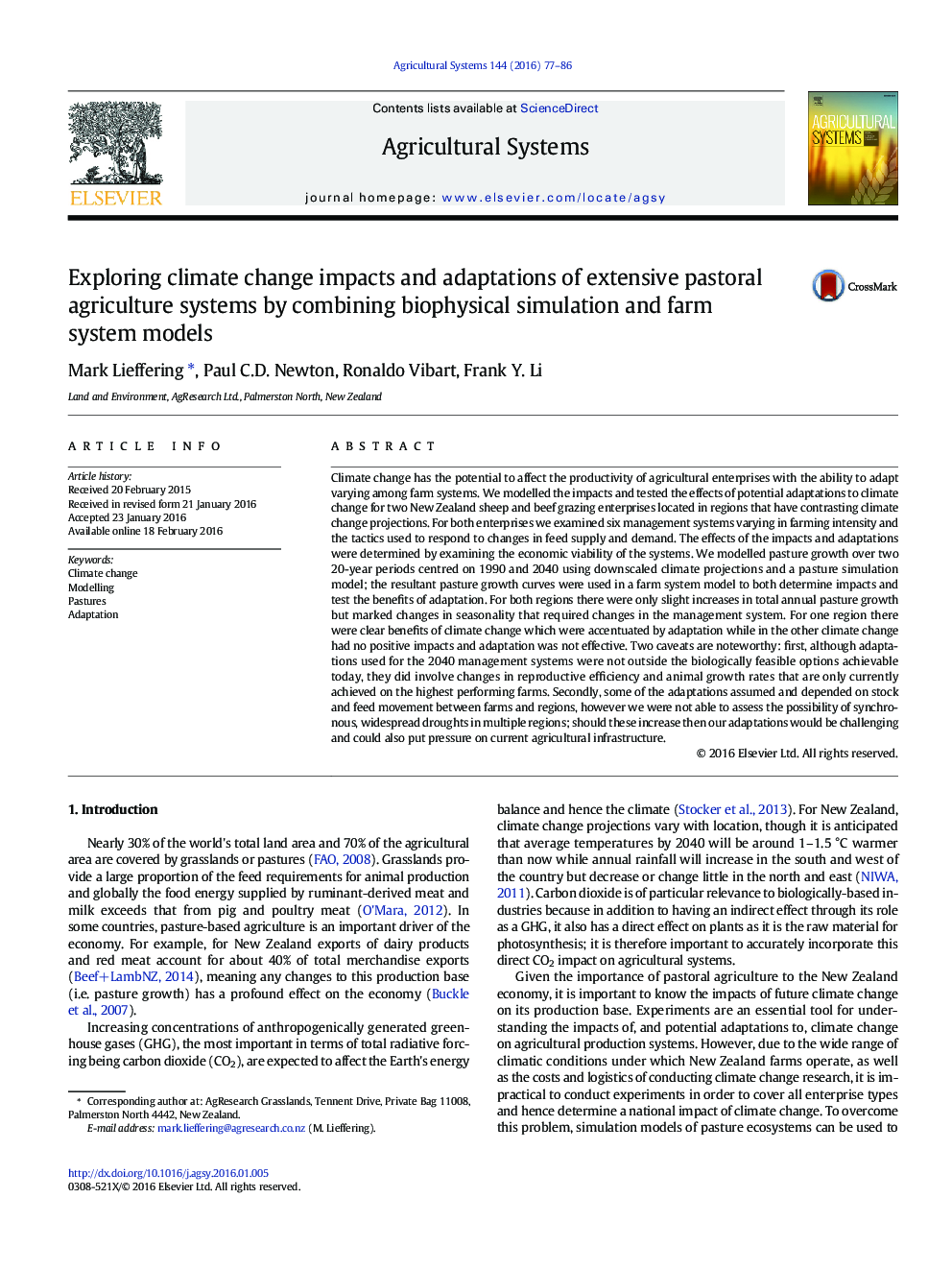| Article ID | Journal | Published Year | Pages | File Type |
|---|---|---|---|---|
| 4491142 | Agricultural Systems | 2016 | 10 Pages |
•We modelled the climate change impacts and adaptations of two pastoral farm systems.•Output from a pasture growth model was used in an economic farm system model.•Pasture growth curves changed with climate change: slightly more feed and earlier springs.•Tactical and strategic adaptations were used to deal with the new growth curves.•The two farm systems differed in the ability to adapt to climate change.
Climate change has the potential to affect the productivity of agricultural enterprises with the ability to adapt varying among farm systems. We modelled the impacts and tested the effects of potential adaptations to climate change for two New Zealand sheep and beef grazing enterprises located in regions that have contrasting climate change projections. For both enterprises we examined six management systems varying in farming intensity and the tactics used to respond to changes in feed supply and demand. The effects of the impacts and adaptations were determined by examining the economic viability of the systems. We modelled pasture growth over two 20-year periods centred on 1990 and 2040 using downscaled climate projections and a pasture simulation model; the resultant pasture growth curves were used in a farm system model to both determine impacts and test the benefits of adaptation. For both regions there were only slight increases in total annual pasture growth but marked changes in seasonality that required changes in the management system. For one region there were clear benefits of climate change which were accentuated by adaptation while in the other climate change had no positive impacts and adaptation was not effective. Two caveats are noteworthy: first, although adaptations used for the 2040 management systems were not outside the biologically feasible options achievable today, they did involve changes in reproductive efficiency and animal growth rates that are only currently achieved on the highest performing farms. Secondly, some of the adaptations assumed and depended on stock and feed movement between farms and regions, however we were not able to assess the possibility of synchronous, widespread droughts in multiple regions; should these increase then our adaptations would be challenging and could also put pressure on current agricultural infrastructure.
